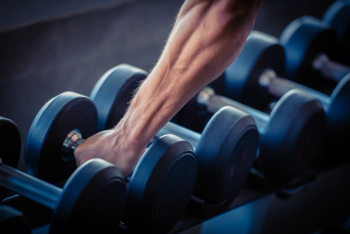
Omega-3s and Oxidation: The value of low oxidation in omega-3 oils
The dreaded “fishy” taste and odor associated with omega-3s is a product of oxidation. How can companies ensure oxidation remains low?
The omega-3 fatty acids DHA and EPA, which are found naturally in seafood and marine oils, are important for vision health and normal development of the brain. In fact, the last few decades of research have shown that the dietary intake of these omega-3 fatty acids has important health benefits and that low omega-3 levels can be an indicator for disease risk.
A recent report from
The omega-3 fatty acids DHA and EPA are perhaps best known for their preventive effect on the underlying causes that contribute to cardiovascular disease1, but they have many other important functions in our bodies2.
International recommendations for daily intake of omega-3s range from 200 to 500 mg/day, equivalent to two servings of fish per week, yet only 20% of the world's population ingests the recommended levels of omega-3s3. Omega-3 supplements represent an easy option to bring daily omega-3 fatty acid consumption up to recommended levels. A challenge for some consumers, however, may be the fear of experiencing a fishy odor or rancid taste with omega-3 supplements.
What Causes Fishy Taste?
Most people have heard about unsaturated fatty acids versus saturated fatty acids. From a chemical standpoint, the omega-3 fatty acids DHA and EPA are highly unsaturated. Their high degree of unsaturation assists with all the healthy physiological functions in our body—but this same high degree of unsaturation also makes them more prone to what we call oxidation.
Oxidation occurs when atmospheric oxygen reacts with the unsaturated fatty acids and, through a series of chain reactions, breaks the DHA and EPA down into smaller molecules. It is these smaller molecules that often give a bad taste and smell that can lead to the fishy taste or even the dreaded “fishy burp.”
Simply, oxidation occurs when the unsaturated fatty acids found in fats and oils are exposed to oxygen. Oxidation affects the sensory quality of the oil and can ultimately ruin the experience for the consumer. It goes without saying that consumers looking for the various health benefits of omegas-3s want to consume their daily recommended dose of DHA and EPA with the freshest possible product that has no harsh smell or taste.
Go Fish!
The more concentrated a fish oil is in the highly unsaturated fatty acids DHA and EPA—meaning, the higher the strength of DHA and EPA—the more prone to oxidation the oil is.
Maintaining high quality for these products is not a trivial matter. Fortunately, there is a solution that works. It requires maintaining top-quality manufacturing from the moment the fish is processed until the oil reaches the consumer, whether that be in capsules, softgels, gummies, or within another formulation, in order to produce high-quality omega-3 concentrates that are rich in unsaturated fatty acids with a pleasant sensory experience, as well as the removal of the “fish-burp.” Reducing the degree of oxidation is made possible through the proper handling and processing of the oil, including strict, controlled conditions, and monitoring quality with advanced analytical methods. The final step is to stabilize the oil with antioxidants that preserve and protect the quality well beyond the expiration date. This provides a powerful solution to the barriers of smell and taste, thus providing a sustainable omega-3 solution to manufacturers and consumers alike.
It is important to mention that according to a study by The Global Organization for EPA and DHA Omega-3s (GOED; Salt Lake City), clinical trials conducted so far with oxidized oils have not demonstrated any negative effects4. However, removing the unpleasant sensory effects can contribute to improving a consumer’s willingness to remain on an omega-3 regimen—and that is the goal, to help them meet the recommended intake of DHA and EPA omega-3s.
Beyond the Heart
Omega-3s are well known to benefit cardiovascular health. However, DHA and EPA are structural lipids and physiologically active lipids, and they also support brain, eye, and immune function, among others. Emerging research has shown that these highly unsaturated fatty acids have a range of physiological roles in our cells and cell membranes that affect our health and well-being2. Delivering them to consumers in a form they will take regularly is key to helping them realize these benefits.
Bente Jeanette Foss, PhD, is chief technology officer for GC Rieber VivoMega (Oslo, Norway;
References
- Fats of Life webpage. “
Cardiovascular Health Benefits: Omega-3s Help the Heart .” - Calder PC. “
Mechanisms of action of (n-3) fatty acids .” The Journal of Nutrition,, vol. 142, no. 3 (March 2012): 592S-599S - Micha R et al. “
Global, regional, and national consumption levels of dietary fats and oils in 1990 and 2010: a systematic analysis including 266 country-specific nutrition surveys .” British Medical Journal. Published online April 15, 2014. - Ismail A et al. “
Oxidation in EPA- and DHA-rich oils: An overview .” Lipid Technology. Published online March 24, 2016.
Newsletter
From ingredient science to consumer trends, get the intel you need to stay competitive in the nutrition space—subscribe now to Nutritional Outlook.





